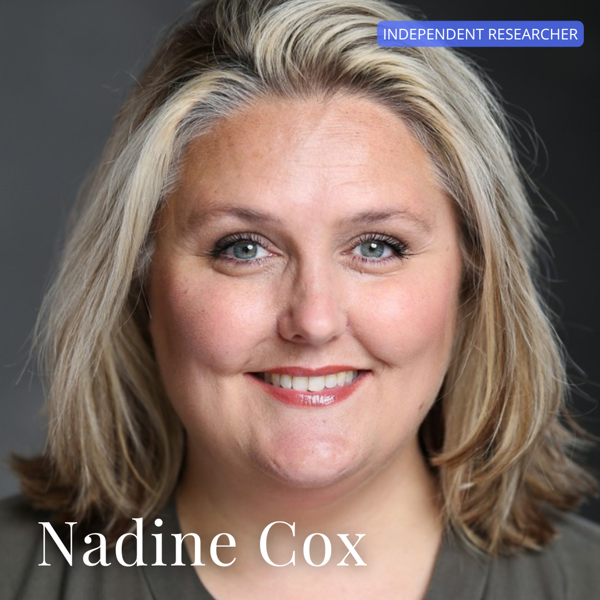This International Stuttering/Stammering Awareness Day, we spoke to Abi Mann-Daraz, a VSC alumna dedicated to supporting individuals who stammer. In this in-depth conversation, Abi shares her personal journey and professional insights, shedding light on the psychosocial impacts of stammering and the transformative power of voice through singing.
Can you share your journey of working with adults who stammer? What motivated you to focus on this community?
I had speech and language therapy as a child and had a complex relationship with my voice. I was running my singing teaching practice and found that the students I attracted had sensitivities around speech, particularly, with stammering. I wanted to understand more about voice psychology, and the psychosocial impacts of voice use when speech is challenging. I learnt a lot through my MA studies; through research into the stammering literature and from listening to my students and clients. Their stories have inspired all of my work and were a direct motivation to keep learning and exploring the role of voice psychology on our overall well-being.
Tell us about the stammering-sensitive singing framework you developed.
During the MA, we were encouraged to consider the drive behind our thirst for knowledge; for me, it was to see how I could best serve my students. When looking at the literature, I found a gap in creative singing pedagogy for people who think differently or have particular needs in learning and communication. As some of my students were minimally verbal, I wanted to understand what tools and strategies were most appropriate for teaching voice. The idea of a framework became clearer after a case study with one of my stammering students. Her voice triggered vastly different emotions depending on how she used it (speech or song). This led to deep and lengthy reflections by both of us as to the nature of our work – singing lessons, or therapeutic voice work and how important it was to define and be intentional about the activities we were exploring. The framework is not a syllabus, but a map of different locations to travel to in the subject of voice, with best practice principles and suggested activities. The latter will vary depending on the student/client one is working with and the definition of the work is still up for debate; ‘singing lessons’ do not appear to be accurate.
How does singing help build voice confidence for those who stammer?
I have witnessed first-hand, how someone who stammers can build confidence in their voice through singing. It gives them space to be heard, and to express their emotions, if they wish. This in turn can prompt a re-framing of their attitude to their voice. I have had feedback from adult students that this change has led to volunteering for work presentations and group activities when they had not in the past. This is the transformative power of singing; empowering people to use their voice differently. That said, asking someone who struggles with speech to go straight into singing and vocal exercises is not necessarily the best strategy. I have found that going back to exploring the creation of sound is an effective stepping stone for building voice confidence.
Can you describe a particular exercise or activity from your framework that has proven especially effective?
Bearing in mind that there are well over 100 activities that I have mapped to the framework, and this is growing every day, I would have to say the element I receive the quickest feedback about is the breath work. There are many pedagogues I draw on for this, but one exercise that people can do immediately is a simple tuning into what your breath is doing at any given moment; not trying to change it or follow a pattern, but just drawing attention to what is happening. This can be done with a simple placement of hands on your chest and/or abdomen. Feel where the breath is sitting. That breath – the air - is Yours. And it is that which can be explored and played with.
Is there anything you discovered from your research about stammering that you didn’t know before, or that isn’t common knowledge?
There is a lot, but one myth-busting piece of information is that the cause is unknown, but is most likely to be neurological, rather than psychological. Too often in the media, stammering is portrayed as being the cause of extreme anxiety. The psychosocial impacts of stammering, which include anxiety and low self-esteem, are the elements of the stammering experience that I dedicate my work to supporting. Still, I think portrayals and misunderstandings can lead the non-stammering community to believe that ‘someone is just super nervous’ and can’t get their words out. I think this belief is doing the community an injustice.
What have you learned from the adults you work with about their experiences with stammering?
I have learnt about the wide range of different experiences for people who stammer. I have learnt about the pain of knowing what you want to say in your head, and not being able to express your meaning. I have also learnt that for some, there are associated feelings of shame and real terror. Can you imagine being terrified of your speech, or feeling terrified that you will not be able to answer when someone asks a question? I sometimes liken it to the non-stammerer feeling in every social situation like they are constantly going into the most frightening job interview they have ever had. The depth of feeling has also reinforced my belief that the relationship we have with our voice is key to our sense of identity. This is the subject of some work I am pursuing at the moment. I think if voice educators really understood this at a fundamental level, not just having an ‘awareness’ of it, the field of voice pedagogy could be blown wide open to a truly holistic and deeply informed space for everyone.
Can you share a story that highlights the impact of your work?
Can I be cheeky and share two? Someone I worked with in my research, who trusted me with their voice when they signed up to their first ever singing lessons, worked in her own time on recording a two-track vocal line to a song we were exploring. She surprised me with it on our last lesson together. To think that we began from a place where she was nervous to sing, had never sung to another person before, and yet within four lessons had worked in her own time on a song that we were exploring was incredibly moving to me. I think it shows the power of sensitive voice facilitation.
A student who participated in my pilot a few years ago, had reported that stammering had impacted her whole life. She did not have paid employment, nor social activities, and she carried feelings of shame around her speech. However, she felt a freedom in her voice when she sings. Because of this, she builds the courage each week to leave her house and come to me to have some time to sing – and speak. For me, this is why I am motivated to continue the work. Being part of a minority community means a constant fight to be heard, especially within communities where fluency is perceived as the only goal, but I am determined to keep fighting for all voices to be heard.
How do you see your work extending to other marginalized groups?
I have learnt that there is a common thread that runs throughout all my work; the importance of being heard. Whether that be due to neurological reasons, societal or emotional reasons, we all just want to be heard. For marginalised groups, this need is heightened; what we need is time and space to Be. I have been applying the framework to students who are diagnosed with autism, ADHD, Bipolar Disorder, long COVID, and the bereaved, including professional performers and the community. This is where the framework has many opportunities to expand; application can be fluid, activities can weave in and out, change emphasis, and I believe, move between 1:1 and group work.
Your thoughts on how educators and peers can better support individuals who stammer in various settings, such as schools or workplaces?
The British Stammering Association, Stamma, is leading a current campaign, ‘space to stammer’. It’s a simple but powerful statement and a good ethos to begin with. If you have people who stammer in your workplace, school or community, stop trying to fill silences when they arise, allow there to be disruptions in speech, keep eye contact and be patient and friendly. I would also open our minds to more creative means of expression and communication. Isn’t it ironic that we all know so much of communication is non-verbal, yet there is such strong emphasis on speech fluency or oracy skills?
Looking ahead, what are your goals for your work with the stammering community?
I would love to continue working with adults who stammer on a 1:1 basis, and I am about to open up some more availability to offer this, both online and in-person. I also hope to develop the framework more with children and young people who stammer. I think it is so important to develop voice confidence as young as possible and I believe there is a lot of potential for this framework to be moved into schools, youth organisations and music education. I also hope to share the framework with SLTs, who have shown interest in the framework during one of my focus groups. I think there is a need for a shared dialogue between speech therapists, voice educators and the stammering community.
I sometimes worry that people assume that my work is intended to reduce stammering. It is not. If anything, it is to help celebrate disruptions in speech – the windows of silence. I hope that the framework can meet people wherever they are on their journey, to support them and their sound.
What advice would you give someone who stammers and is hesitant to express themselves?
Be kind to yourself; be patient and maybe consider finding someone you trust to explore your sound in a non-judgemental way. I would also encourage you to reach out to the stammering community to learn what resources and support are out there for you; the opportunities are growing all the time and everyone is so welcoming.
How can society at large contribute to a more supportive environment for individuals who stammer?
Education; seek out the stammering community to understand the lived experiences of stammering.
Kindness; we all need a bit more kindness. You never know what someone is going through, no matter how well you think you may know them. Accept that not everyone thinks or behaves the same as you do, however, we probably all have in common the wish to be accepted and heard.
Thank you, Abi, for sharing your experiences and insights on such an important topic. We look forward to see how your work continues to help others.
Abi Mann-Daraz
Abigail runs a busy private practice specialising in harnessing voice and musical confidence through ethical, informed singing teaching, professional voice coaching and neurodiverse sensitive pedagogy.




